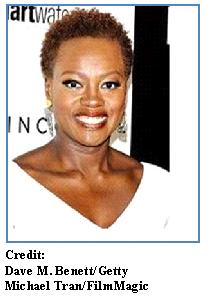And the winner is . . .
 Two things drew more controversy during Sunday’s 84th Academy Awards program than the actual Oscar winners. One was presenter Angelina Jolie’s on-stage leg flash. The other was Viola Davis’ hair. The media attention paid to those issues was as diverse as the two women who garnered the hype.
Two things drew more controversy during Sunday’s 84th Academy Awards program than the actual Oscar winners. One was presenter Angelina Jolie’s on-stage leg flash. The other was Viola Davis’ hair. The media attention paid to those issues was as diverse as the two women who garnered the hype.
Jolie’s leg, strategically positioned through the thigh-high split in her black Atelier Versace gown was – and continues to be – fodder for clever talk show hosts, facetious news anchors and sharp-tongued comedians. On the other hand Davis’ decision to wear her au naturel hairstyle to the awards program is the hottest topic among African Americans since Bobby Brown’s sudden departure at Whitney Houston’s funeral.



